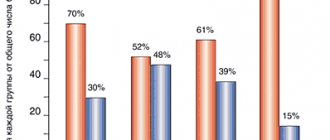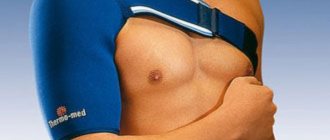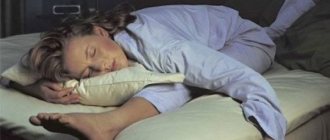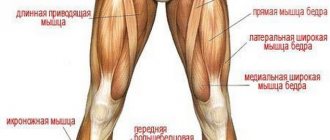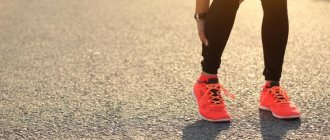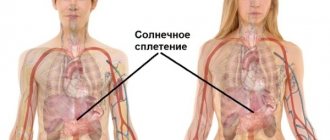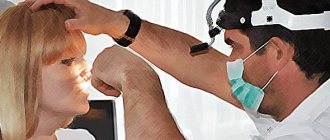Author
: Grachev Ilya Illarionovich
Editor
: Efremov Mikhail Mikhailovich
Date of publication: 05.13.2014 Date of update: 24.11.2020 All doctors of the clinic
If you came here, it means that you or someone close to you has a bad knee. Whether your child fell off a bike or you yourself feel discomfort after working out in the gym, or maybe your grandmother complained that her leg has been aching for several days. Knees and knee joints are “fighters of the invisible front”: until they bother us, we don’t think about them, and then it’s too late. Or is it too late? Let's talk about pain: what are its causes, what is its treatment and prevention.
Why does my knee hurt?
The causes of pain can be both external and internal. External are primarily injuries that occur when twisting, hitting, falling or other mechanical impacts on the knee joint. Internal causes are most often associated with inflammatory or degenerative processes: arthrosis, arthritis, meniscus damage, problems with blood supply.
What exactly hurts?
The knee is a very complex apparatus. It contains bones, muscles, nerve endings, cartilage, and tendons. Each of these tissues can be damaged. When walking and other activities, the joint is constantly loaded. Even mild pain quickly becomes severe, and now the aching pain in the knee is your constant companion. Sometimes the problem is obvious, and then self-medication is possible, but severe discomfort when walking, bending and straightening is a reason to go to the clinic as soon as possible.
What diseases are characterized by knee pain?
The most common reason is joint problems. In older age, four out of five people suffer from them. As for diseases of the knee joint, they, according to various estimates, make up from a third to a half of all joint diseases. Knee pain when walking plagues most older people, since with age the tissues become less elastic and do not regenerate as quickly. Inflammatory processes, which often accompany aging, also do not add vitality to joints. Diseases that can manifest themselves as knee pain are:
- Arthritis. Inflammatory damage to the joints, affecting the entire body, which also manifests itself as pain in the knees. Connective tissue suffers. At first there is no particular discomfort, but over time the attacks of pain become more severe and prolonged.
- Arthrosis (gonarthrosis). A consequence of arthritis or an independent disease that arises due to injury or after infection. The joint is deformed, and if at first unpleasant sensations arise only when walking, flexing and extending, then as the disease progresses, the knee will hurt constantly.
- Meniscopathy. Damage to the meniscus is characterized by sharp, severe pain in the knee joint, which then gradually subsides. Do not be under the illusion that the disease is “silent” does not mean that it has disappeared. It often returns in the form of chronic arthrosis. As with arthrosis, meniscopathy requires treatment from a specialist. Self-prescription of therapy is dangerous, it is better to go to a doctor.
- Tendinitis of the knee joint. It affects the ligaments, and pain is most often felt when bending and straightening the knee. Athletes often suffer from this disease.
- Koenig's disease. With this disease, a piece of cartilage leaves its rightful place and begins to move inside the joint. Pain is most often observed during movement: bending the knee, walking.
- Hernia or Baker's cyst. The knee swells and interferes with walking, and discomfort occurs when bending and straightening.
- Periarthritis. Inflammation of joint tissues occurs both on its own and as a complication of other diseases, for example, hormonal disorders. The knee swells, the pain in the knee joint is aching.
This is not a complete list of diseases, and the symptoms of different pathologies may be similar. The doctor will determine why it hurts when walking, bending or straightening, where the aching pain in the knee came from, why it could hurt so sharply, and will also refer you to some specialized specialist.
Causes of knee pain on the inside when bending
Pain on the inside significantly impairs the basic functions of the joint. In this case, an increase in temperature in the joint area is observed. It becomes hot to the touch. You can also join:
- Edema;
- slight redness;
- bruises.
Many conditions and pathologies provoke such pain. Let's describe them in more detail.
Hoff's disease
Doctors know this disease as lipoarthritis. It affects the fatty tissues that are located around the joint. The chronic type of inflammation provokes severe pain and deterioration in motor activity.
The pathology is manifested by the proliferation of the fat body. At the same time, Goff’s body loses its elasticity and elasticity. Large volumes of fiber are impinged on tissues, and blood flow is disrupted. The following are considered to be provocateurs of the condition:
- Injury;
- heavy loads;
- diseases of bones, muscles;
- hormonal imbalances.
Bruises
This injury is quite common. Usually she is not taken seriously. Injury is possible when playing sports, during an accident, or when performing movements carelessly. Injury is indicated by:
- Swelling, swelling of the joint;
- strong pain;
- change in color of the epidermis;
- restriction in movement.
Soft tissue diseases
Pain in the joint area is caused not only by arthritis and arthrosis. Pain syndrome also occurs when soft tissues are damaged:
- Foot anserine bursitis;
- prepatellar bursitis;
- popliteal bursitis;
- infrapatellar bursitis.
Bursitis of the knee joint: symptoms and treatment, types of pathology
Stagnation of blood circulation
Venous insufficiency now worries about half of the working population. This pathology is provoked by a malfunction of the vein valves. A chaotic flow of blood begins. In this case, the walls of the veins cannot withstand the pressure, they expand. The following conditions also provoke stagnation of blood circulation:
- Increased intra-abdominal pressure;
- changes in the hormonal levels of women;
- pregnancy;
- venous thrombosis;
- sports, household injuries.
Viral infections
Knee pain can be caused by infectious arthritis. It develops after the penetration of bacteria. Cartilage tissues are destroyed rapidly, within a few hours or days. Arthritis can occur with infections in other areas of the body:
- Genital organs;
- digestive organs.
In this case, the pathology is called reactive arthritis.
Injuries
Knee pain can occur after injuries that can easily be caused by playing sports at home. Running, martial arts, and gymnastics are considered more traumatic sports. Injury is also possible in road accidents and ordinary falls.
Tendinitis
We have already talked about tendonitis. This inflammation of the tendon occurs at the site of attachment of the specified element to the bone. Inflammation is provoked by:
- Injuries;
- wearing uncomfortable shoes;
- fungi;
- insufficiently strong immunity;
- muscle imbalance.
Sciatica
With inflammation of the sciatic nerve, patients complain of:
- Shooting, drawing pain in the legs;
- burning sensation;
- swelling;
- loss of sensation;
- loss of motor activity.
When the sciatic nerve is inflamed, the leg above the knee also hurts.
Vascular diseases
Vascular damage is accompanied by fatigue and pain in the legs. Malfunctions of blood vessels are usually provoked by the type of work (prolonged sitting, walking, standing). Vascular diseases provoke inflammation of muscles and joints.
Varicose veins
About half of the population has experienced varicose veins. Pathology involves deformation of the walls of blood vessels through which blood flows to the heart muscle. These vessels are no longer able to perform their function normally. They say about the development of pathology:
- Swelling of the legs;
- throbbing pain;
- cramps at night;
- changes in the dermis;
- feeling of heaviness, spreading of the legs;
- spider veins;
- elongated, tortuous veins that protrude above the surface.
How do you know if it's time to go to the doctor?
What kind of pain bothers you? Do they occur when walking? Run? At rest? Tell your doctor about this. An injury or a systemic inflammatory process is felt differently; pain in the knee when walking has some causes, while pain in the knee when flexing and extending has others; Acute pain is different from chronic pain... Remember: a normal healthy knee does not hurt. Any deviation from this condition is a reason to visit a specialist.
- Acute pain is a reason to consult a doctor immediately. Most often it is caused by traumatic injuries from that same bicycle in childhood, remember? Meniscopathy, arthrosis, osteomyelitis (necrotic tissue damage) manifest themselves in the same way. Even due to a minor injury, the joint or surrounding tissues often become inflamed, so in this case it is also worth getting medical advice, otherwise soon you will always hurt, and not just when walking or other activities.
- Periodically arising inconveniences, for example, when the weather changes. Older people often complain about this: yesterday it was raining, today the sun came out and it got a lot warmer, it seems to be good, but it seems not so good, because everything hurts. Perhaps it is tendonitis, rheumatoid arthritis, arthrosis. The doctor will tell you more precisely. You can start treatment at home, buy pain-relieving gels and take them out of the medicine cabinet every time the weather changes. But it is better to treat the causes of the disease, rather than the consequences.
- Pulling, aching sensations in the knee joint. The causes of this pain range from an injury you didn't notice to degenerative processes in the tissue. Self-diagnosis can be dangerous.
The intensity of the sensations is a sign of how soon you need to see a doctor. If the pain is infrequent and not severe, it would be better to find time and go to a specialist before it gets worse. If it hurts often or severely, it’s definitely worth coming to an appointment as soon as possible. The pain is constant and acute, make an appointment in the near future, because irreversible changes could have begun in the joint. A doctor is needed here and now if:
- the temperature has increased;
- the pain is sharp and unexpected;
- the sore knee is deformed.
Crunching in joints - when to worry
Joint pain at rest
Prognosis for recovery
Severe, sharp pain in the knee is a sign of serious damage, injury, or worsened disease. In most cases, it is possible to get rid of this symptom by eliminating the cause using conservative or surgical treatment.
Methods, terms of treatment and rehabilitation depend on the cause of knee pain. Recovery after a ligament rupture or dislocation can take from 4 weeks to 2 months, after a fracture – up to 6 months.
Acute aseptic bursitis and synovitis are successfully cured in 2–4 weeks. It is impossible to completely recover from arthrosis and rheumatoid arthritis. The process can only be stopped - through prevention, taking medications, and physical therapy exercises.
How to independently determine the causes of pain in the knee joint?
Is it worth doing this? Accurate clinical diagnosis and treatment are important for knee pain. You cannot take a puncture or do an MRI at home. In some cases, an x-ray is needed, in some others a simple examination is enough, but a doctor must examine it. He knows what signs you need to pay attention to, what diseases cause discomfort when bending, walking, or changing weather conditions. At our clinic, specialists have extensive experience in diagnosing knee and knee joint problems and will help you choose the optimal treatment.
Operative therapy
Surgical intervention is prescribed in advanced cases of knee joint diseases or injuries. There are many types of operations in medicine. The required treatment method is selected depending on the cause of the pain.
For meniscal injuries, arthroscopy is prescribed. The soft tissue in the knee area is cut, surgical instruments are inserted and the affected tissue is sutured. In case of a severe tear, when most of the structure is damaged, the meniscus is replaced with a natural or synthetic prosthesis.
If a Baker's cyst is detected, it is removed as follows: the patient is given local anesthesia, then the soft tissue on the back of the knee is cut, the neoplasm is separated from the healthy layers and excised. The patient is left under observation in a hospital setting for a week.
Treatment for knee pain
A small percentage of patients require surgical treatment, but most often massage, therapeutic exercises, physiotherapy, and warming up the joints are used. Sometimes limiting physical activity is indicated. It is better to be treated under the supervision of a doctor; he will determine exactly which means will help the fastest and safest. Acupressure combined with warming is what Eastern medicine specializes in.
Treatment methods offered by the clinic
Our clinic uses the experience accumulated by generations of specialists in oriental medicine. Thanks to acupuncture, you will move more freely after the first procedures, and microinjections of homeopathic remedies will support the body's immune response and cope with inflammatory processes. Warming with wormwood cigars will relieve swelling and pain, acupressure and manual therapy will restore joint mobility. Special gymnastics will help maintain the normal condition of the joint. No surgery will be required and there will be no side effects.
Therapeutic measures
Treatment for knee pain on the inside or outside is prescribed depending on why it occurs. Health activities are carried out using medications, surgery, and folk remedies.
Medicines
Medicines are selected taking into account the cause of the development of the painful symptom. If the culprit is inflammation, then non-steroidal anti-inflammatory drugs are used. If infection is present, antibiotics are used.
For arthrosis, the basis of treatment is chondroprotectors, which restore the affected cartilage tissue and prevent its further destruction. For severe pain, take analgesics.
Diet
If pain occurs in the knee on the inside when walking or at rest, doctors advise following the rules of nutrition. This is especially important when joint degeneration or inflammation occurs.
The patient's diet should not contain harmful foods. Fatty dishes, white bread, sweets, fast food, pizzas, and hamburgers are removed from the menu. You will also need to avoid carbonated and alcoholic drinks.
Patients should enrich their diet with vitamins and minerals. Components such as vitamin B, fiber, and unsaturated acids Omega-3 and Omega-6 are especially important.
Folk remedies
An additional assistant in eliminating pain, discomfort and treating pathologies or injuries of the knee joint is alternative medicine. Various methods of therapy are used: applying compresses, rubbing, applying ointments, taking decoctions and infusions.
The recipes described below help to effectively cope with pain:
- Mix a tablespoon of honey and salt, spread the mixture on the affected knee, and wrap it with a warm cloth. Keep the compress for 6 hours, you can leave it overnight. The home remedy restores blood flow to the damaged area and reduces inflammation and pain.
- Make a mixture of herbs from crushed St. John's wort and yarrow in a 1:2 ratio. Mix with Vaseline to form a thick mass. Rub the resulting product intensively into the affected area. Treat this way for 2 weeks.
- Pour 50 g of bay leaf into 250 ml of water, put on low heat, and bring to a boil. Cool the broth, then strain it. Drink the prepared folk medicine 4 days in advance, dividing it into equal portions.
Despite the naturalness of home remedies, they should only be used after receiving a doctor’s approval.
Prevention
Doctors recommend proper nutrition and reasonable exercise. Excess weight is a risk factor. As for sports, sports such as football or basketball increase the likelihood of injury. It is safer to practice swimming or yoga. Well, if you can’t see life without a ball, wear leg protection, special shin guards. Before training you need to warm up, and after it it is better to sit and wait until your body comes to its senses. You shouldn’t go outside right away; hypothermia is harmful to your joints.
Sign up for a free initial appointment
Symptoms
In addition to pronounced signs - pain of varying intensity and crunching when squatting, this manifestation has additional symptoms characteristic of the disease that caused the knee to hurt when walking or other leg movements:
- sleep disorders;
- increased body temperature;
- decreased or complete lack of appetite;
- stiffness of movements;
- increasing pain when walking. There is a noticeable improvement in a sitting or lying position;
- noticeable swelling of the injured knee - can be observed from the inside;
- inability to shift weight on the affected limb;
- deformation of the kneecap;
- change in skin color on the knee;
- fever.
When the first signs appear, you must immediately contact a medical facility for diagnosis and effective treatment.
